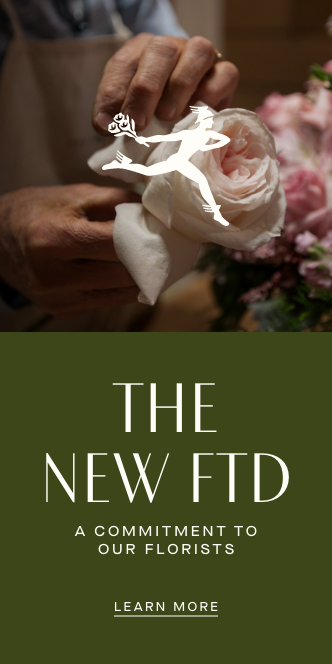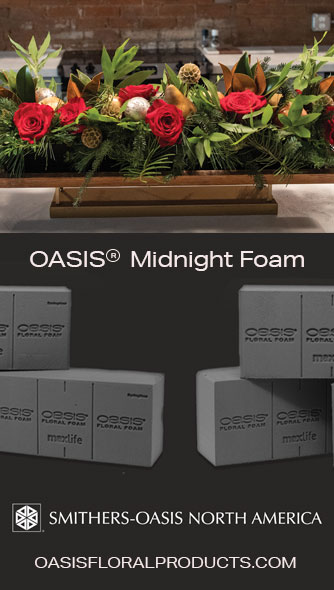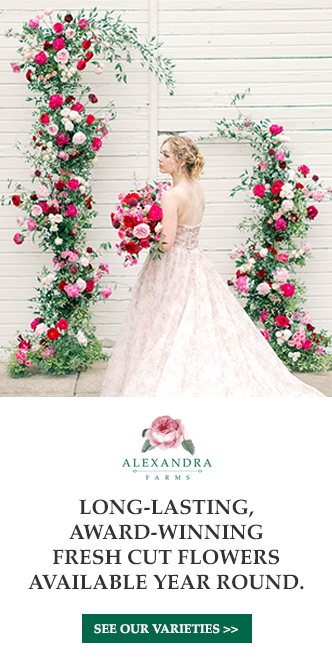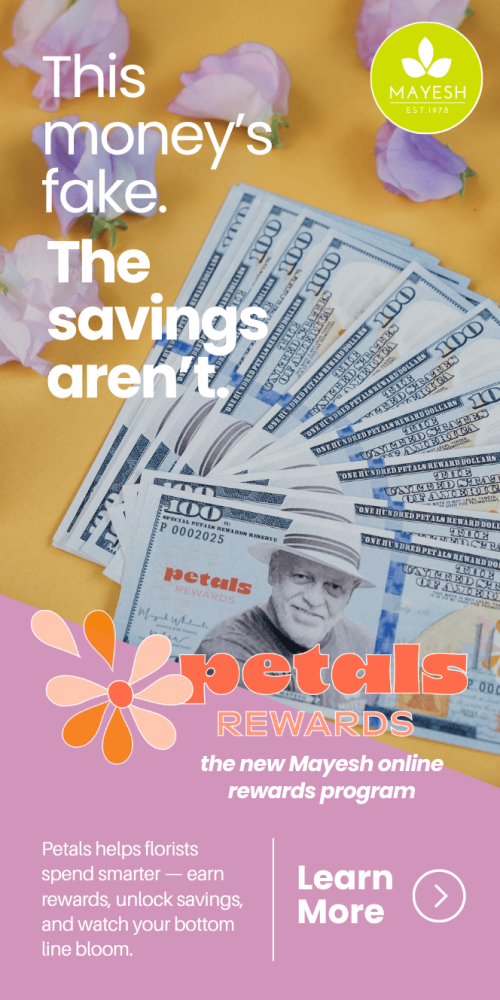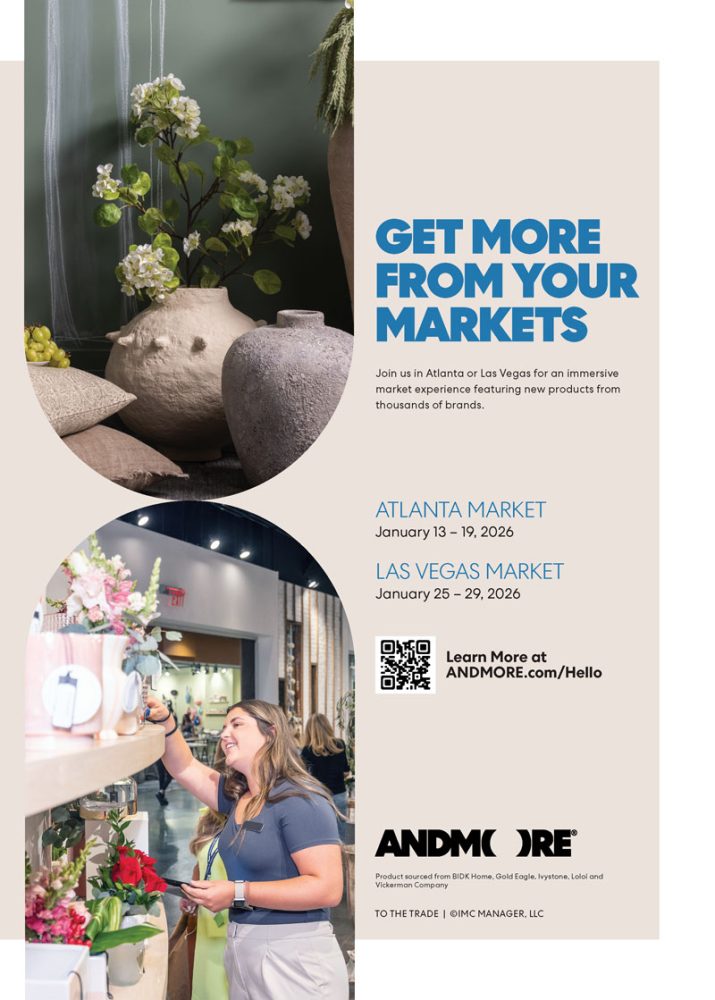Exploring the beauty of wearing blooms
By Molly Lucille
The flower industry has found endless paths to activation as collaboration between art mediums becomes part of the flower world’s zeitgeist. From runways to editorial shoots, high fashion has started to fall in love with fresh flowers. Harkening back to the iconic line in “The Devil Wears Prada,” the 2006 film, “Florals, for spring? Groundbreaking.” Floral prints and motifs have always been a part of fashion design. However, fresh flowers are weaving their way into the fabric of couture fashion.
Brenda Wallace, the creative force behind Floral Atelier in Barcelona, Spain, has made this collaboration a central part of her artistic identity. “Fashion and floral design may seem like two separate worlds, but to me, they share the same language: texture, movement and emotion.” Wallace’s work has been featured across the flower and fashion industries, from crafting custom couture wearables to collaborations with Vogue and other publications. “Both disciplines transform materials into storytelling, whether through fabric or petals, silhouettes or stems. Each project is a dialogue between fashion and flowers,” she explains, reflecting on the impact collaborating with designers has had on her creative practice.
“Working alongside fashion professionals means entering their world and translating their aesthetic into florals. Sometimes it’s about mirroring textures, the ruffles of a gown echoed in delicate petals, other times it’s about contrast, letting flowers introduce vulnerability or strength,” says Wallace. “What I love most is how unpredictable flowers are. They change, they carry scent and memory. This ephemeral quality adds a layer of rawness and authenticity to fashion imagery,” she adds. “The process requires sensitivity: understanding which blooms will hold their shape under studio lights, how colors will translate through the lens, and how to maintain a dialogue between the garment and the floral work without one overpowering the other.”

Regarding collaboration, Wallace says: “These projects are always about trust and respect. Creative directors and stylists open their vision to me, and my role is to weave florals into that vision. It’s less about decoration, more about conversation, asking how flowers can deepen the story being told. What strikes me most is how naturally fashion and florals align—both are deeply tied to seasons; both reflect identity and emotion.” She adds: “Working on floral fashion projects has taught me that flowers will fade, but the image, the feeling, the story, stays.”
The importance of the team is a critical aspect of Wallace’s work. “Behind every editorial or fashion project lies an entire ecosystem of creative talent. I’ve had the privilege of working alongside creative directors, photographers, videographers, models, movement directors, producers, stylists, makeup artists, hair professionals, brands and light assistants, just to mention a few. Each one plays a key role in bringing the vision to life,” she notes. “The magic happens when there is respect, open communication and a shared commitment to the story we’re telling. Every detail, from a gesture introduced by the movement director to the light shaped by the assistants, to the styling choices that frame the florals, contributes to the whole.
“Every stitch, every bloom, every gesture, they all tell the same story when we work as one. That’s where the magic lies. Beyond the beauty of flowers and fashion, I carefully choose the projects I dedicate myself to. For me, they must carry meaning, whether it’s honoring traditions, connecting with my roots or caring for the environment. I am drawn to projects that are impactful and meaningful, that hold essence and soul,” says Wallace.
Another standout name in the world of floral fashion is Julia Rose. Her Australia-based business, Flowers by Julia Rose, blurs the line between fashion designer and floral designer. For two years and counting, Rose’s unique floral creations have graced the runways during one of the hottest weeks—the iconic New York Fashion Week, a longstanding, semi-annual tradition that occurs every September and February.
“Before the chaos of the runway kicked in [last year], we staged an exclusive editorial photoshoot in the Aura Hotel penthouse. It was our way of planting the flag and saying, ‘We’re here!’ We took a moment to breathe, to reflect and to do what we love most: create art from flowers. The penthouse photoshoot was our declaration of arrival —a soft but powerful roar that floral fashion had entered the city,” Rose explains.
This roar most certainly has been heard across the industry. Rose’s work and the work of other floral designers throughout the world have influenced the fashion industry to include and celebrate fresh florals.
Rose exuberantly describes her initial Fashion Week experience. “On the big day, the energy was electric. The models from Yanii Models, with their grace and poise, became living canvases for our creations. As they walked the red carpet draped in floral couture, the audience was captivated by the fusion of fashion and floristry,” she says. “Oasis supported us with the base structures of all our creations, their product was the skeleton, the boning of our couture. Design Master allowed us to change the colors of our creations, dramatizing depth and movement, stealing the spotlight. Vibrant hues and velvety tones became a symbol of bold elegance, perfectly embodying the rock-edge fashion fierceness we wanted to showcase. Cameras flashed, jaws dropped, and whispers of admiration filled the air. It was a moment we’ll never forget.”
From red carpet installations to wearable floral designs and editorial shoots to coats formed entirely out of the famous David Austin’s ‘Juliet’ Garden Roses (Seen here designed by Ka’iesa Kasimbeg with Yusif Khalilov and Nora Maria Photography), the world of high couture has been revolutionized by the flower industry. While this may seem like an intimidating world to enter, floral fashion does not have to be limited to the exclusive pages of a fashion magazine or the runways of New York Fashion Week.

Many cities have their own fashion opportunities, with submissions open to local designers, as seen by these stunning examples from Portland, Oregon’s Bloom Tour PDX, designed by Emily Jaques of Wild Blue Bell Floral Design. Editorial shoots can be crafted with a simple collaboration of like-minded creatives. Even simple experimentation with weaving floral couture in your studio with leftover flowers is a worthy pursuit. The joy of creating can activate a world of possibilities, clothing the world in the fabric of flowers and sharing the transformative power of wearing blooms.










